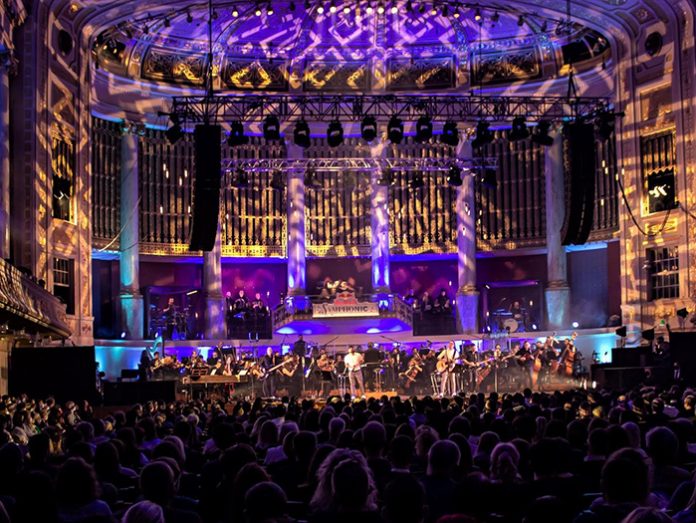Niklas Fuchs was asked to light the Red Bull Symphonic in Vienna which he did with the help of ChamSys.
An event where ‘Austropop Meets Classics’ is held on three consecutive nights at Vienna’s historic Wiener Konzerthaus concert hall.
Fuchs employed the of the ChamSys PC Wing Compact and Extra Wing Compact. “I used the Extra Wing only for Master Intensity Faders and stuff that’s important for key lighting. The whole show was programmed from scratch, with the PC Wing. I didn’t use a single cue from my usual Seiler & Speer Showfile.
“A really good thing about ChamSys is that it allows you to do a lot of stuff with very little hardware,” continued Fuchs. “I’ve played headliner shows on very big stages with up to 36 DMX Universes, just with my laptop and a PC Wing. During one of those times, I would be standing between 12 full-sized lighting consoles from other major brands that cost a fortune.
Also the haze turned out to be a challenge in this venue, with its extensive gold-plating and is an Austrian historical heritage site. Fuchs had to make sure to use a hazer that doesn’t leave any oil slick on the venues wall and could produce a perfectly even haze in the whole room.
The rig, which was supplied by Martin Kames, also had to be versatile for the shows, which were about 110 minutes long, and involved around 90 various musicians.
“It was a difficult effort to fit all musicians onto the stage, even though it is quite big,” said Fuchs. “We ended up putting the choir, the drummer and the percussionist on an elevated passage behind the orchestra, which meant I had to deal with a lot of compromises lighting-wise because of a lack of space for positioning lights.”
The Timeline Editor and Group Cues function in his ChamSys desk were critically important in helping Fuchs create the show despite compromises he had to make along the way. Even though he did not have any timecode in the actual show, he used the timeline as an inbuilt music player, setting loops when programming more complex bits of the songs, and then jumping to those parts quickly during the show.
“I found the Timeline Editor to be very handy,” said Fuchs. “Meanwhile, the Group Cues function is a real game changer. Just sort the heads in the group the way they are hung and all your FX, Fades, etcetera are correct. No more headache while cloning. Although I designed the lights and show the way I wanted for this particular stage, it was clear that we would have to change some fixture positions on setup day. Some LED Pars needed to switch position with wash lights, therefore the order of my groups was changed, and some effects were wrong. The Group Cue function allowed me to correct all my cues very quickly in one step by just reordering the heads in the groups.”






